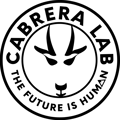A framework is a mental model in which the content and structure are salient; in other words it is not content agnostic (see Jigs)
An evolving list of frameworks. This list is by no means comprehensive and we are not experts in these models (thus the heavy use of Wikipedia descriptions where appropriate). If you know of other frameworks that should be on this list, please send them to hub@cabreraresearch.org
- SWOT analysis (or SWOT matrix) is a strategic planning technique used to help a person or organization identify strengths, weaknesses, opportunities, and threats related to business competition or project planning.[1] It is intended to specify the objectives of the business venture or project and identify the internal and external factors that are favorable and unfavorable to achieving those objectives. Users of a SWOT analysis often ask and answer questions to generate meaningful information for each category to make the tool useful and identify their competitive advantage. SWOT has been described as the tried-and-true tool of strategic analysis,[2] but has also been criticized for its limitations
- Traditional policy making model
- Policy decision making process model
- Gap analysis: In management literature, gap analysis involves the comparison of actual performance with potential or desired performance. If an organization does not make the best use of current resources, or forgoes investment in capital or technology, it may produce or perform below an idealized potential.
-
Stakeholder Analysis: Stakeholder analysis is the process of assessing a system and potential changes to it as they relate to relevant and interested parties. This information is used to assess how the interests of those stakeholders should be addressed in a project plan, policy, program, or other action.
-
Behavioral Model: Behavioral models describe the internal dynamic aspects of an information system that supports the business processes in an organization. During analysis, behavioral models describe what the internal logic of the processes is without specifying how the processes are to be implemented.
-
Six Sigma
-
Cost benefit: A cost benefit analysis (also known as a benefit cost analysis) is a process by which organizations can analyze decisions, systems or projects, or determine a value for intangibles. The model is built by identifying the benefits of an action as well as the associated costs, and subtracting the costs from benefits.Soft Systems Methodology
- System Dynamics
- 7 Habits of Highly Effective People
- Design Thinking
- Lean
- the 5Ss
- Agile
- Agent Based Modeling (ABM)
- Agent Based Approach (ABA)
- Maslow's Hierarchy of Needs
- Bloom's Taxonomy
- The Six Thinking Hats
- The Species Concept
- Gardner's Multiple Intelligences
- Viable Systems Model (VSM)
- Toyota Production System (TPS)
- Toyota Product Development System (TPDS)
- Kanban
- Sprints
- World Class Manufacturing
- Pros and Grows
- the 5 Ws (Who, What, Where, When, Why)
- 5 Whys
- Black Box Analysis: A variation on the "Input-process-output Jig" that treats the Process is a black box (can't/don't see what is inside) as a way to check wether something strange or untoward is going on in the inputs and outputs. (see map).
- Input-process-output: A structure where inputs are made to a process (an S) and then one monitors outputs. (see map)
- Zoom in Zoom Analysis: The basic idea for this jig is to see that whatever you're starting with (say "e") you can see "e" as a part of a larger whole (d) or has having parts (f). (see map)
